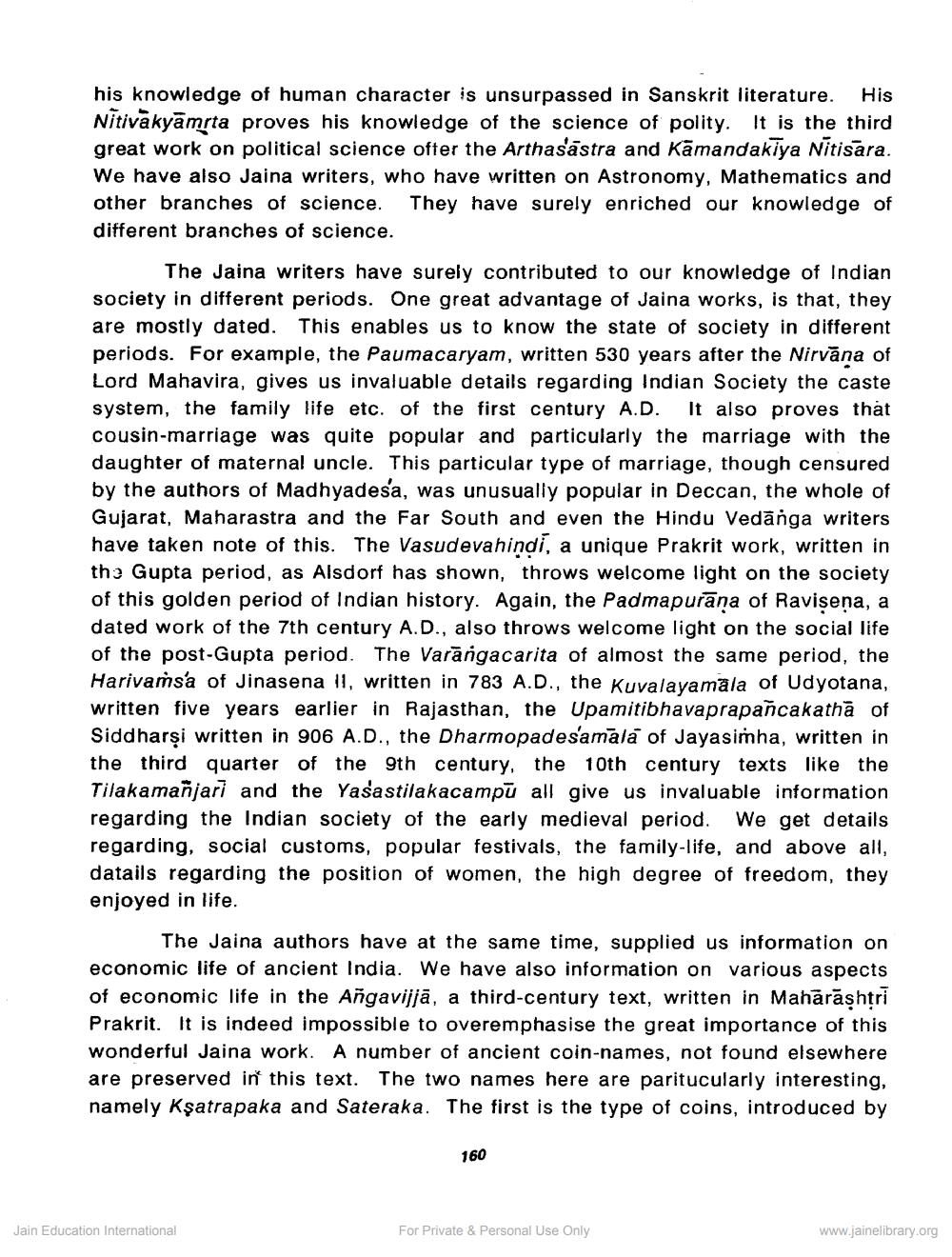________________
his knowledge of human character is unsurpassed in Sanskrit literature. His Nitivakyāmrta proves his knowledge of the science of polity. It is the third great work on political science ofter the Arthasastra and Kamandakiya Nitisara. We have also Jaina writers, who have written on Astronomy, Mathematics and other branches of science. They have surely enriched our knowledge of different branches of science.
The Jaina writers have surely contributed to our knowledge of Indian society in different periods. One great advantage of Jaina works, is that, they are mostly dated. This enables us to know the state of society in different periods. For example, the Paumacaryam, written 530 years after the Nirvana of Lord Mahavira, gives us invaluable details regarding Indian Society the caste system, the family life etc. of the first century A.D. It also proves that cousin-marriage was quite popular and particularly the marriage with the daughter of maternal uncle. This particular type of marriage, though censured by the authors of Madhyadesa, was unusually popular in Deccan, the whole of Gujarat, Maharastra and the Far South and even the Hindu Vedānga writers have taken note of this. The Vasudevahindi, a unique Prakrit work, written in the Gupta period, as Alsdorf has shown, throws welcome light on the society of this golden period of Indian history. Again, the Padmapurāna of Ravisena, a dated work of the 7th century A.D., also throws welcome light on the social life of the post-Gupta period. The Varāngacarita of almost the same period, the Harivassa of Jinasena 11, written in 783 A.D., the Kuvalaya māla of Udyotana, written five years earlier in Rajasthan, the Upamitibhavaprapancakathā of Siddharşi written in 906 A.D., the Dharmopadesamālā of Jayasimha, written in the third quarter of the 9th century, the 10th century texts like the Tilakamanjari and the Yasastilakacampū all give us invaluable information regarding the Indian society of the early medieval period. We get details regarding, social customs, popular festivals, the family life, and above all, datails regarding the position of women, the high degree of freedom, they enjoyed in life.
The Jaina authors have at the same time, supplied us information on economic life of ancient India. We have also information on various aspects of economic life in the Angavijjā, a third-century text, written in Mahārāshtri Prakrit. It is indeed impossible to overemphasise the great importance of this wonderful Jaina work. A number of ancient coin-names, not found elsewhere are preserved in this text. The two names here are paritucularly interesting, namely Ksatrapaka and Sateraka. The first is the type of coins, introduced by
160
Jain Education International
For Private & Personal Use Only
www.jainelibrary.org




